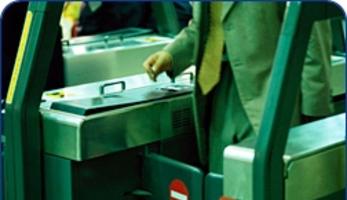Introducing a smart card system and integrated ticketing
Summary
Creating a new payment system was part of Stockholm Transport’s efforts to provide higher-quality public transport services.
Implementing sustainable mobility
The previous ticketing system of the public transport operator Stockholm Transport had been introduced in 1992. As part of a long-term project to introduce a more modern system corresponding better to passengers’ needs, Stockholm Transport began investigations into available ticketing systems and the experiences of other transport operators. These investigations showed that smart cards would be the most appropriate solution for Stockholm Transport’s requirements.
Progress
A prototype smart card was tested in 2000. Ticket validation machines were installed in all buses operating on one of the city routes and card readers were installed on the automatic barriers in two metro stations. The aim was to gauge the reactions of passengers and transport personnel to using a card that had to be validated by machine rather than simply shown to a bus driver or controller.
On the whole, both passengers and personnel were very positive about the system. It then took Stockholm Transport over one year to draft the 7,000 requirements for the system, based on their own needs, the wishes of passengers, and the experience of other European transport operators. For example, the smart card used in the system had to correspond to the standards of Resekortsföreningen i Norden (RKF, an association of transport operators in Sweden and Denmark), allowing passengers to use the card throughout Sweden and also when using the bridge (Öresundsbron) between the southern parts of Sweden and Själland, Denmark.
ERG Ltd, Australia, was selected as the supplier at the beginning of 2003. By the end of 2004, workshops had been held in Perth, Brussels and Stockholm and some of the product specifications had been reviewed. The new ticketing and payment system would comprise both back office and front office products. The back office product included a clearing system to enable travel across borders and between provinces and counties. The front office included card readers for automatic gates and automatic ticket dispensers. With the possibility of Internet purchase, the focus moved to self-service sales, although the new system also featured a higher number of easily accessible sales points.
The new smart card system, Stockholm Transport Access, was introduced to the public in 2009 and the old system was gradually replaced.
Outcomes
Between 1998 and 2004, Stockholm Transport attracted 60,000 new passengers, and the satisfaction level rose by 4 percent.
Delays in measure implementation were due to a miscalculation of preparation deadlines and due to internal problems experienced by the supplier. However, by the end of 2010 a total of 2,900,000 cards had been distributed, with 850,000 in use on a regular basis.








